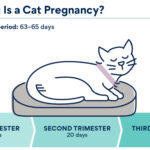Clinics and medical imaging centers across the nation are promoting a new service for health-conscious individuals: the “Full Body Cat Scan,” also known as “whole-body CT screening.” This technology, promising early detection of cancer, heart disease, and other abnormalities by “looking” inside the body, typically involves scanning from the chin down to the hips using X-ray imaging to create cross-sectional images.
The technology behind this is “X-ray computed tomography” (CT), sometimes called “computerized axial tomography” (CAT) scan. Different types of X-ray CT systems are being advertised for various screening purposes. For instance, “multi-slice” CT (MSCT) and “electron beam” CT (EBCT) – also known as “electron beam tomography” (EBT) – are rapid X-ray CT systems often marketed for screening calcium buildup in heart arteries.
CT, MSCT, and EBCT all utilize X-rays to generate images that represent “slices” of the body, similar to slices of bread. Each image slice represents a very thin section, allowing detailed visualization of body structures.
CT scans are a recognized and invaluable medical tool for diagnosing disease, trauma, or abnormalities in patients showing signs or symptoms. They are also used for treatment planning, guidance, and monitoring. The novelty is in marketing CT scans as a proactive or preventive health measure for healthy individuals without any disease symptoms.
The Lack of Proven Benefits for Healthy Individuals
Preventive action, early disease detection, and uncovering treatable problems all sound appealing, almost too good to be true. Currently, the Food and Drug Administration (FDA) is unaware of any scientific evidence that whole-body CAT scans in asymptomatic individuals offer more benefits than harm. The FDA, responsible for ensuring the safety and effectiveness of medical devices, prohibits CT system manufacturers from promoting their devices for whole-body screening of people without symptoms. However, the FDA does not regulate medical practitioners, who can use devices for any purpose they deem appropriate.
Compared to most diagnostic X-ray procedures, CT scans expose patients to relatively high levels of radiation. While the benefits of diagnostic and therapeutic CT scans generally outweigh the radiation risks, the benefits of full body CAT scans for asymptomatic people are questionable.
- Can these scans effectively distinguish between healthy individuals and those with hidden diseases?
- Do suspicious findings lead to further invasive tests or treatments that carry additional risks with minimal benefit?
- Does a “normal” scan result guarantee good health?
Many people may not realize that a full body CAT scan might not provide the “peace of mind” they expect or the information necessary to prevent health issues. An abnormal finding might not be serious, and a normal finding could be inaccurate. Like other medical procedures, CT scans can miss conditions, and “false positives” can trigger unnecessary further testing.
Key Considerations Before Getting a Full Body CAT Scan
- Whole-body CT screening has not been proven to meet generally accepted criteria for an effective screening procedure.
- Medical professional societies have not endorsed whole-body CT scans for asymptomatic individuals.
- CT screening for specific diseases in high-risk individuals, such as lung or colon cancer, is currently under investigation.
- Radiation exposure from a CT scan may slightly increase the lifetime risk of developing cancer.
- The FDA offers more information about whole-body CT screening on its Computed Tomography (CT) Website.
FDA Recommendation
Before undergoing a CT screening procedure, carefully research and consider the potential risks and benefits, and discuss them with your doctor.

